The FIFA Women’s World Cup offered a close quarter-final between Germany and Sweden. Despite a possession rate of 64%, Germany was incapable of scoring more than once and therewith lost the quarter-final due to two Sweden goals with 1-2. Sweden were capable of frustrating the German attacking department which lacked versatility with a disciplined defensive performance.
This tactical analysis will deal with the tactical reasons behind Sweden’s success and Germany’s failure.
Lineups and Formations
German coach Martina Voss-Tecklenburg lined up her side in a 4-2-3-1 system. German captain Alexandra Popp was surprisingly lined up as a central midfielder next to Sara Däbritz in front of the back four. Lina Magull therefore played in a higher role as a playmaker behind central forward Lea Schüller. On the right side, Giulia Gwinn was again playing as an offensive full-back behind Svenja Huth who tucked inside during the attacking phase.
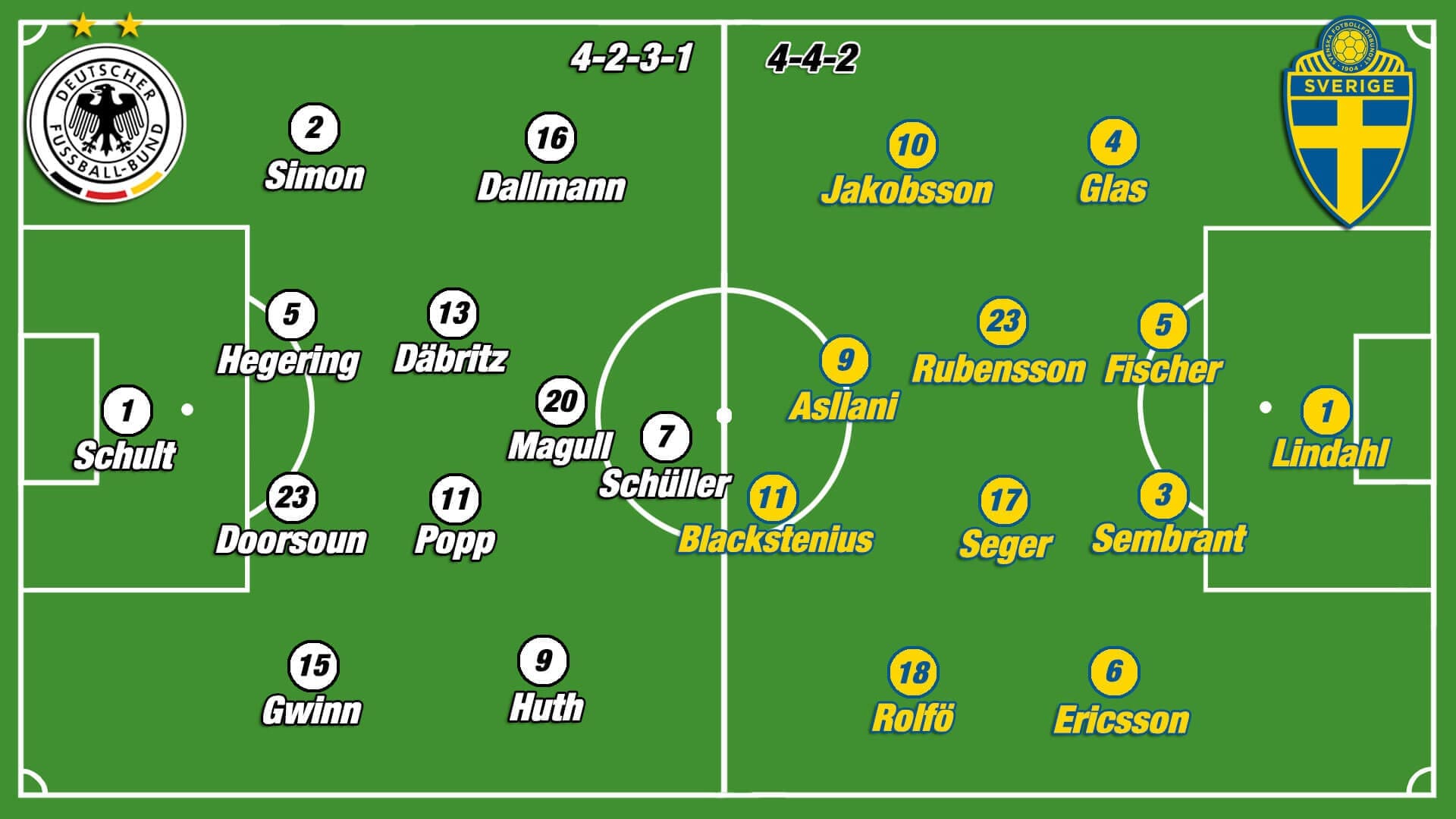
Sweden on the other hand deployed a 4-4-2 formation. Wingers Sofia Jakobsson and Fridolina Rolfö were tasked to pose problems for Germany’s defence together with striker Stina Blackstenius. Kosovare Asllani acted next to Blackstenius when defending but dropped into midfield in possession acting somewhat like a false nine. Behind that, the double pivot consisting of Caroline Seger and Elin Rubensson lent the defence stability with their zonal defending approach. Chelsea player Magdalena Ericsson played as a right-back in the Swedish back four.
Germany’s issues in the last third
Within their attacking phase, Germany overloaded the central area and the half-spaces leaving the flanks unoccupied. A possible reason for that was Germany’s attacking personnel. With Magull and Schüller up front, Germany’s attackers preferred to receive through passes instead of high crosses from wide areas.
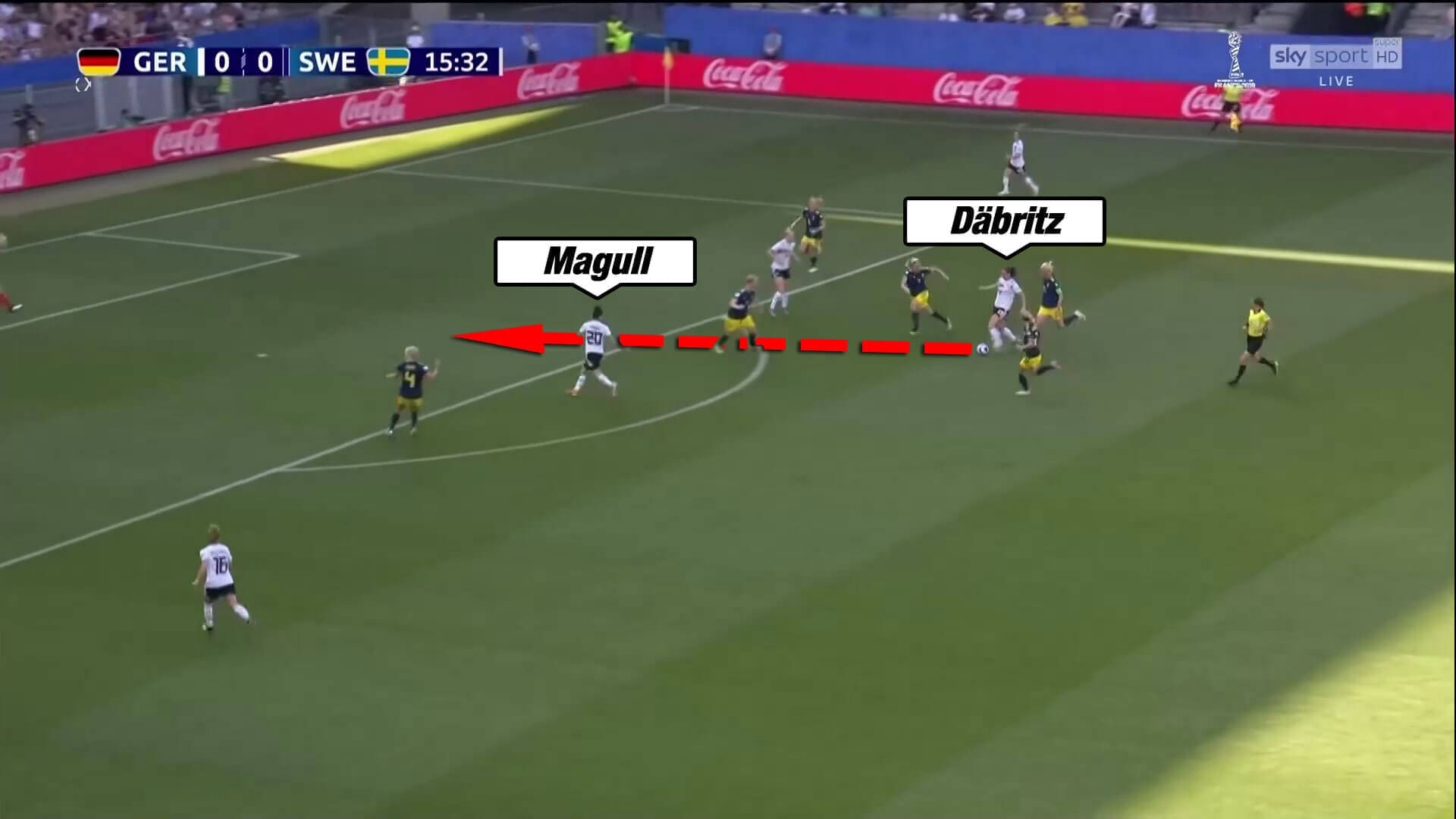
Contrary to the previous matches, Popp was playing in midfield and therefore could not use her heading abilities.
The biggest German issue within the last third was that they did not provide enough width.
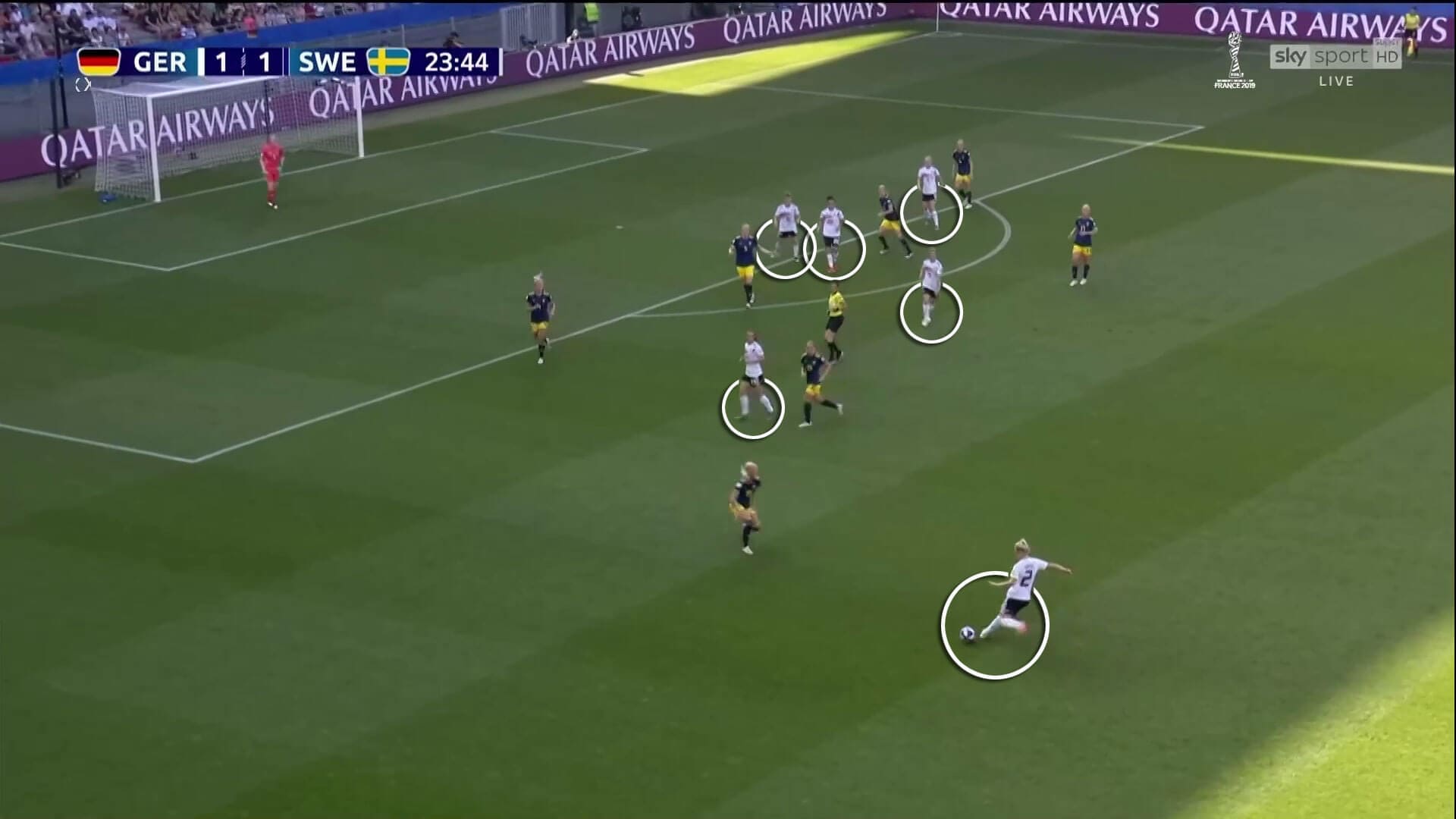
The situation above underlines the German problem. Sweden have no problem to defend the cross because the ball travels a long time. Furthermore, not even a single German attacker tries to drag away Swedish defenders from the target zone. Therefore, Sweden have enough defending personnel in and around the penalty area to clear the ball.
Sweden’s attack pose problems for Germany’s back line
Voss-Tecklenburg’s team pressed the opposition early. Magull therefore acted next to striker Lea Schüller. With the help of narrow wingers and one of their double pivot moving forward, Germany created a 4-1-3-2 shape in pressing moments.
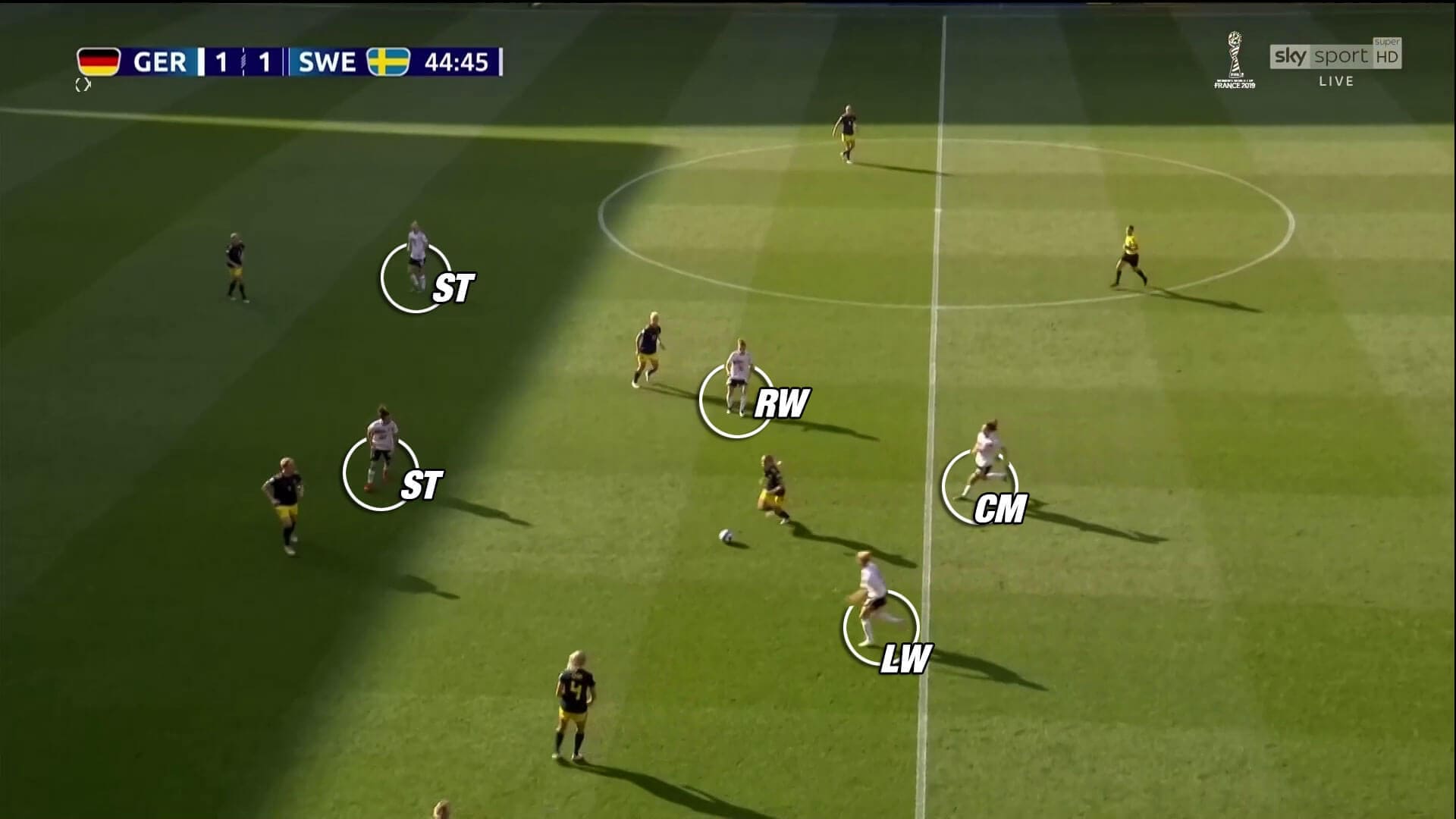
That way, Germany could prevent Sweden from playing through midfield. Nevertheless, they could not avoid Sweden to play long balls which posed a problem for the defensive department.
During the whole first half, Germany’s back four struggled to prevent the Sweden attackers to receive the ball behind the back line. Due to a suboptimal staggering of the defenders, the centre-backs often saw themselves in 1v1 situations.
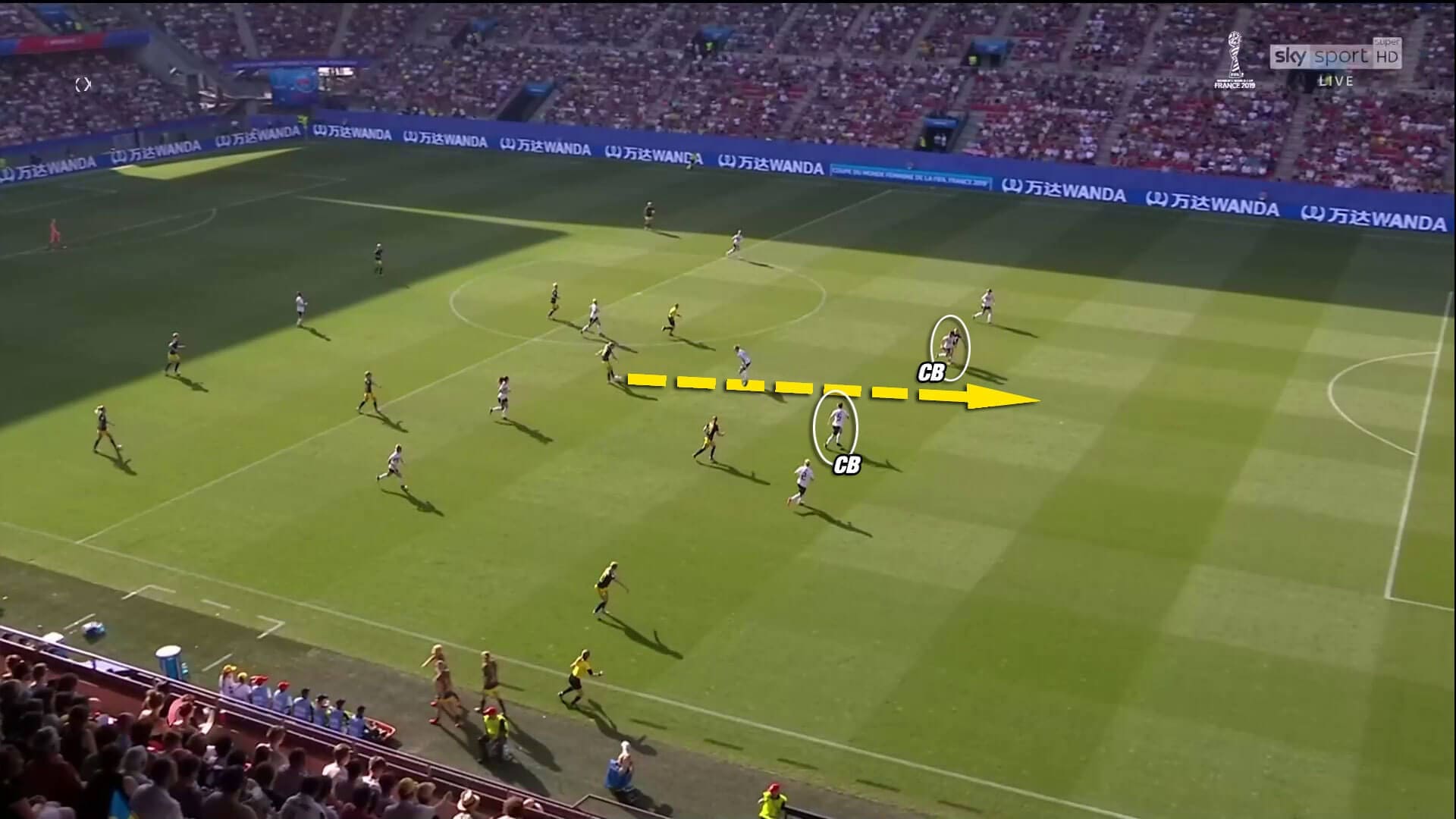
That meant that the Swedish attackers had great opportunities once they surpassed their direct opponent like Jakobsson in the 12th minute.
Germany’s back four problems also offered Sweden some opportunities after long balls.
One of these situations led to the Swedish equaliser.
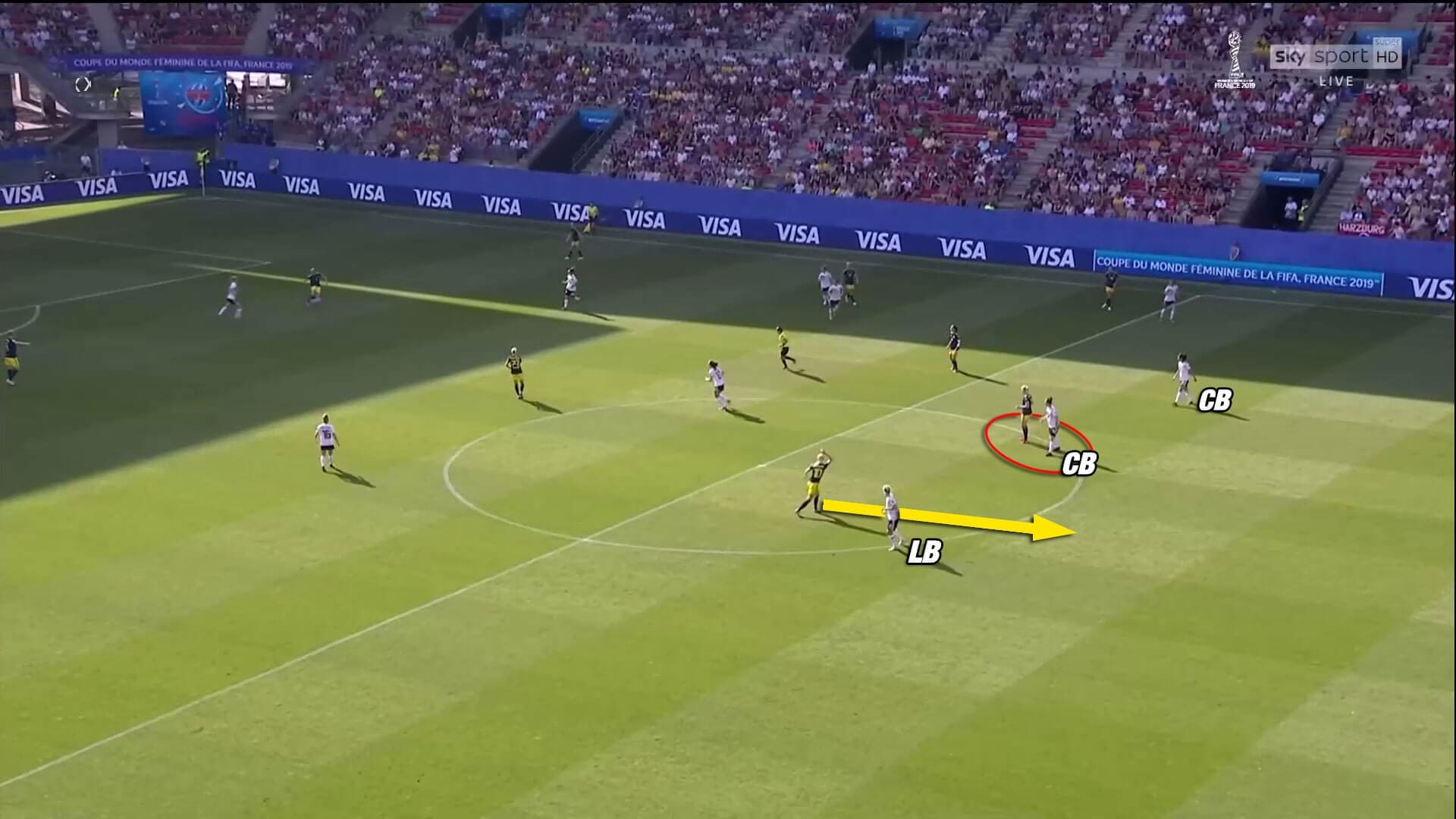
Again a problematic staggering within the German defensive department facilitated the Swedish goal. With both central defenders positioned on the same line and a lack of defensive contribution of the left-back, Germany invited Sweden to score the equaliser.
Germany’s left-focused build up vs Sweden’s mid-block
In the first half, Germany’s possession phases were very left-focused. That was due to the positioning of central midfielder Sara Däbritz who was supposed to pull the strings during the build-up. As Däbritz (#13) liked to drop into the left-back position, the German build-up often started on the left side.
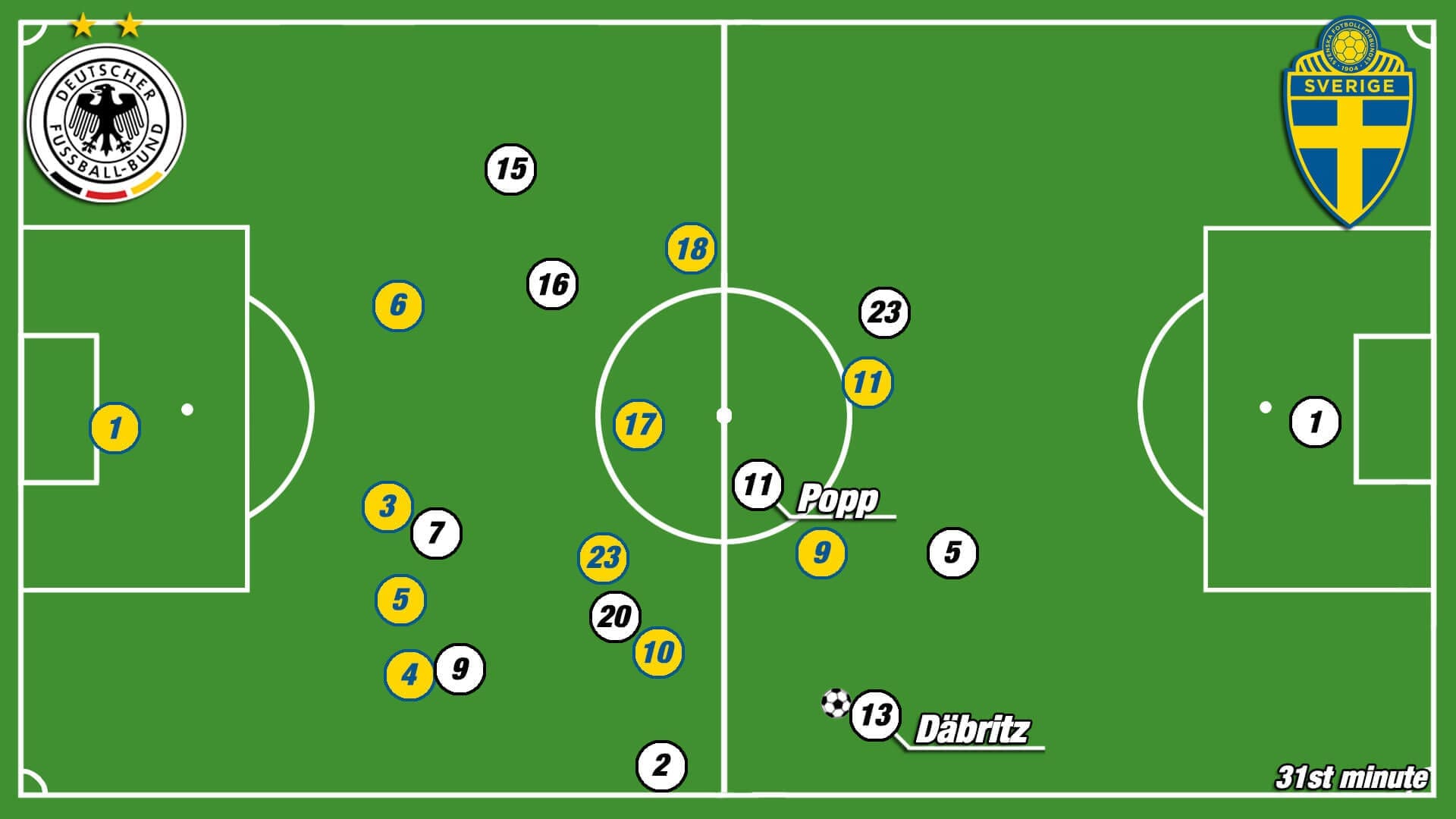
Since right-back Giulia Gwinn (#15) moved high up the pitch, Germany lacked connection to the other side and had to progress up the pitch on the left or in the centre. This facilitated Sweden to press Germany. Therefore, Gerhardsson’s side used a 4-4-2 mid-block.
With Däbritz involved in the deep build-up, Germany missed her playmaking abilities further up the pitch though. Popp (#11) was mainly focused on keeping her position as a holding midfielder and did not support the attack often enough.
When Däbritz did not drop into a deeper position though, Sweden could press the German side player-to-player with their 4-4-2 shape. As a result, Voss-Tecklenburg’s side struggled to play out and had to play long balls in these cases.
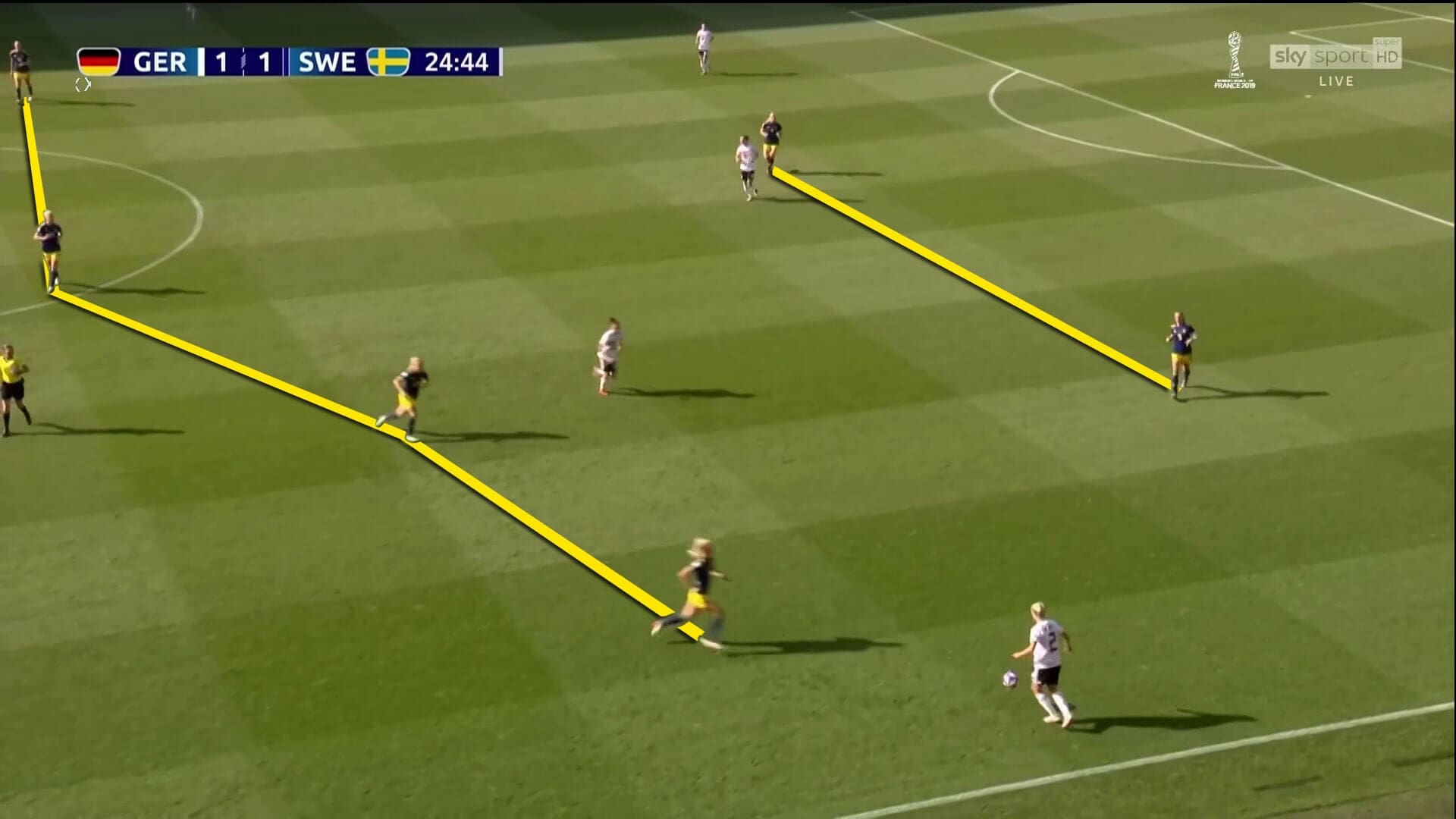
In general, Voss-Tecklenburg’s side aimed at the creation of overloads on the left wing. But Sweden could defend most of the attacks with a space-oriented defending approach by shifting towards the ball. Once having set up in their compact shape, the Swedish midfielders pressed the ball-carrier and prevented Germany from playing forward passes.
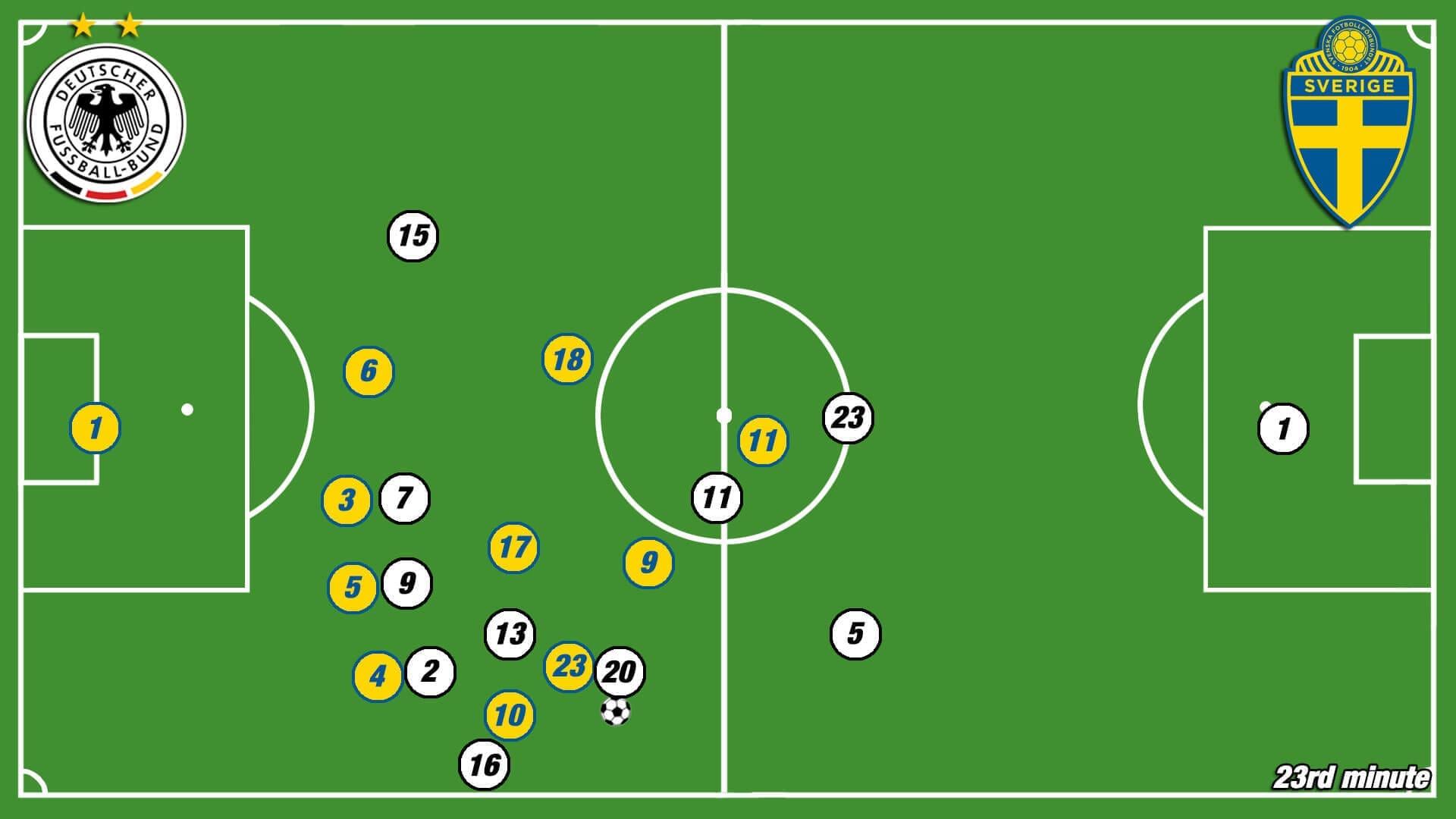
Sweden’s 4-4-2 defence frustrates Germany
In the second half, Dzsenifer Marozsán was brought into play for winger Dallmann. But as expected, Marozsán played as a central offensive midfielder while Magull switched to the double pivot position and Däbritz took over the role of the right winger. As Däbritz liked to tuck inside, Germany still lacked width and therewith also the option to switch play. As a consequence, Sweden could defend Germany’s attacks by shifting towards the ball within their compact 4-4-2 shape.
Moreover, Sweden stuck to their tactical approach. Independent of the scoreline, Gerhardsson’s side always attempted to disrupt the attacking phase with the help of a 4-4-2 mid-press instead of parking the bus. By applying pressure on Germany’s midfielders, Sweden therewith still prevented Germany from progressing up the pitch on occasion.
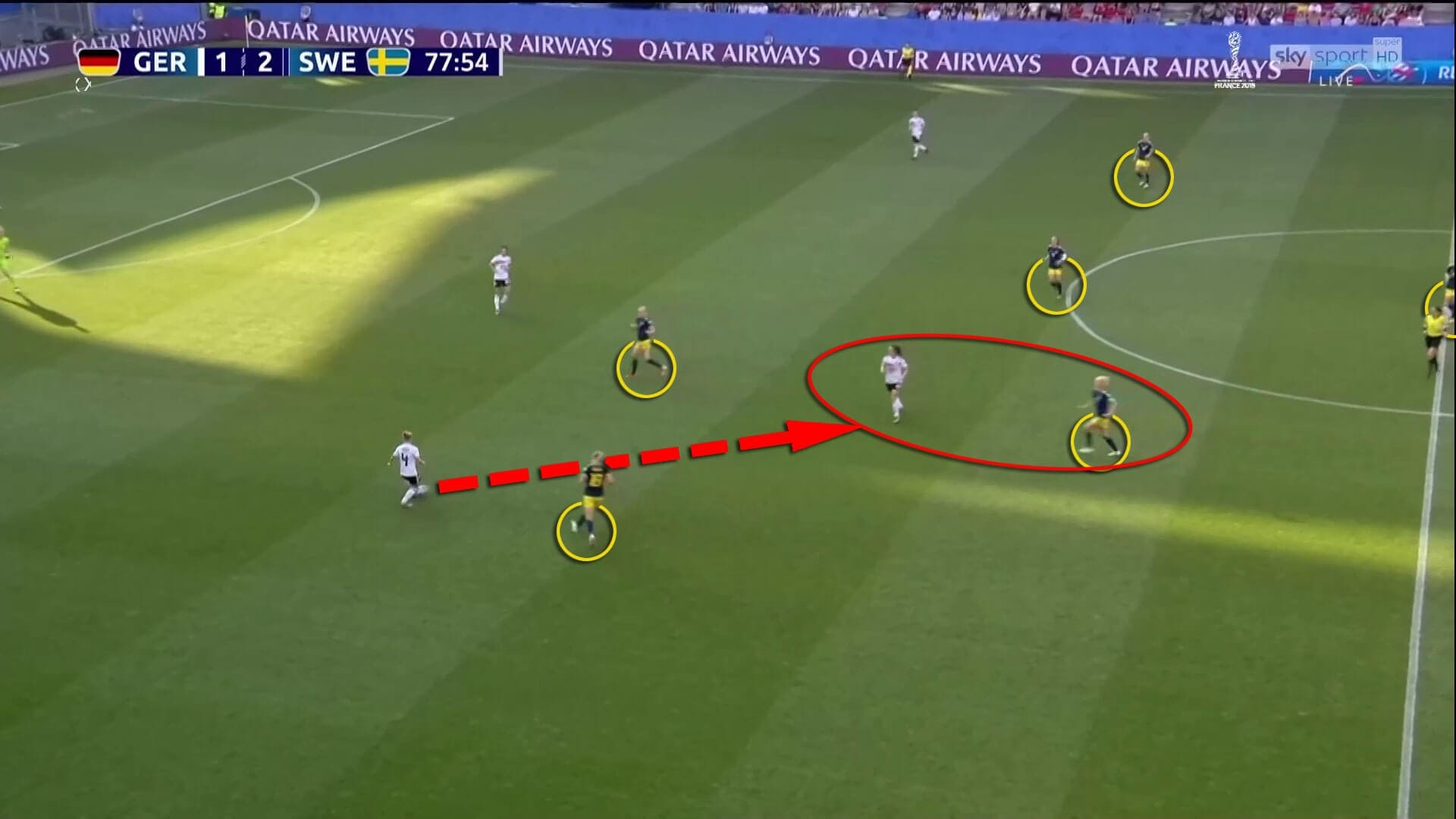
Although Germany attempted more crosses in the second half, they could not create many chances with this concept as Popp who is the most threatening German player in terms of aerial duels was positioned in midfield. Only 3 of their 14 crosses reached a German attacker.
Last but not least, the German squad seemed exhausted in some moments. Especially in transition moments, the German side allowed Sweden to reorganise as they took very long to take in their positions.
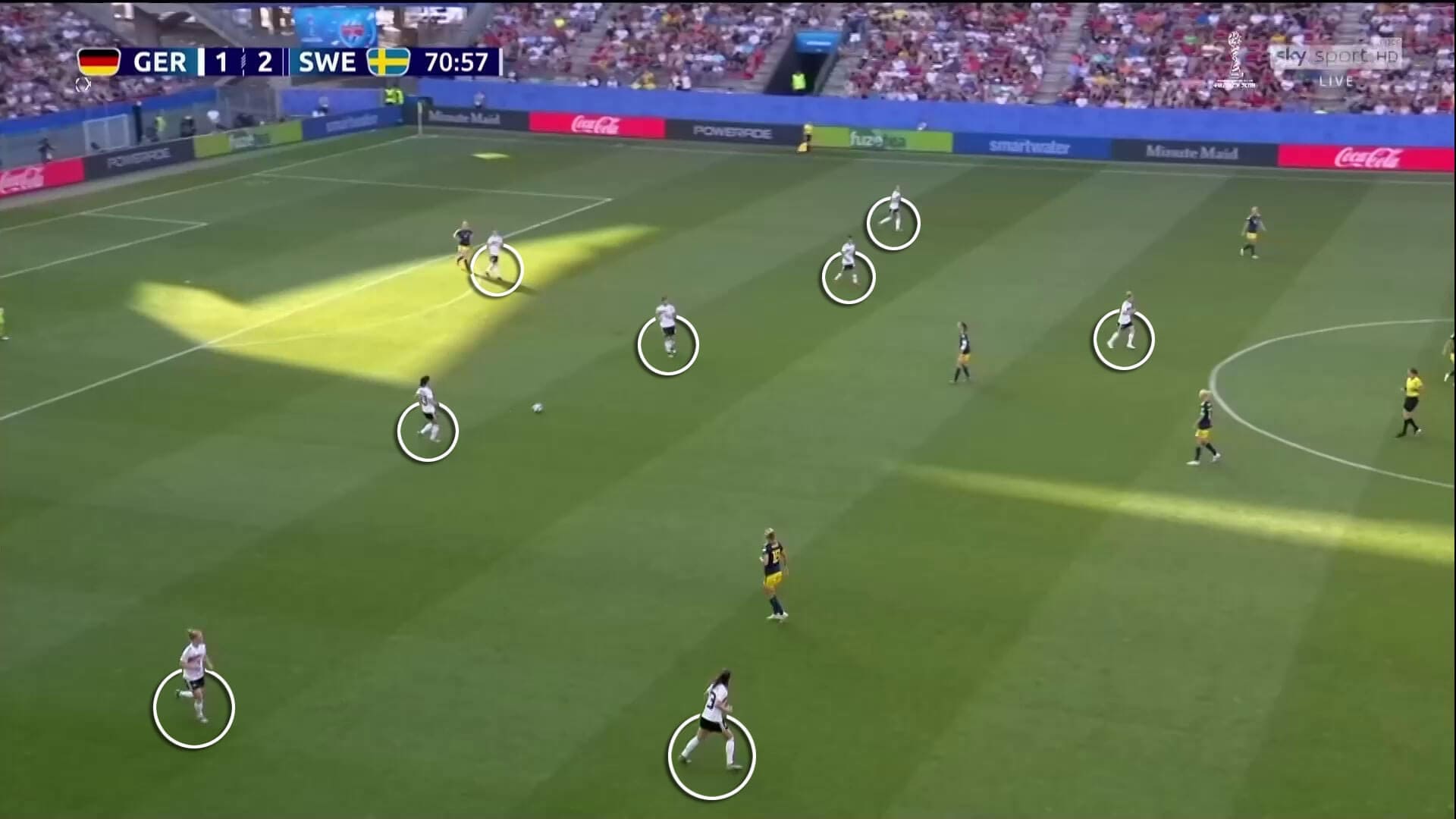
Swedish attacking simplicity and effectivity
Sweden’s attacking strategy throughout the game was kept simple but effective. Attacker Blackstenius and fast winger Jakobsson always attempted to offer longer passing options with their deep runs. Left winger Rolfö occupied the flank and was ready to put in crosses. With their attacking trio and the false nine Asllani, Sweden occupied the penalty area in these cases with at least three to four players. Since often a central midfielder also joined the box, Germany’s defensive department struggled to defend the Swedish attackers.
Exactly such a situation resulted in Sweden’s decisive goal. Attacking through the right wing though, Sweden could put in a cross. After a save from goalkeeper Almuth Schult, striker Blackstenius converted the rebound.
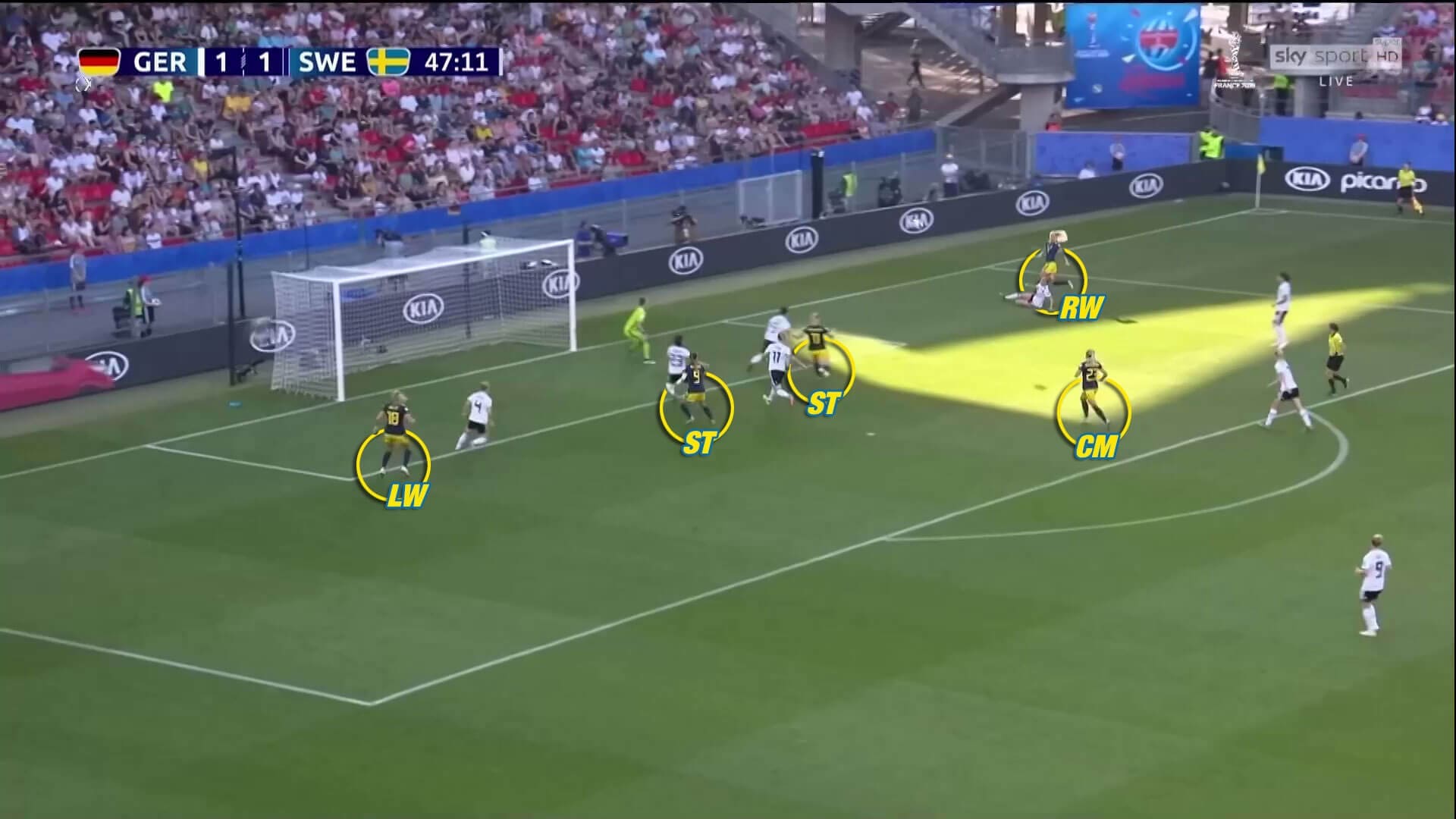
Furthermore, in the course of the second half, Sweden were offered more and more counter-attacking opportunities. With their two wide forwards and their striker, Sweden used fast breaks to threaten the German goal. Especially the gap between Germany’s defence and midfield enabled Gerhardsson’s team to counter-attack.
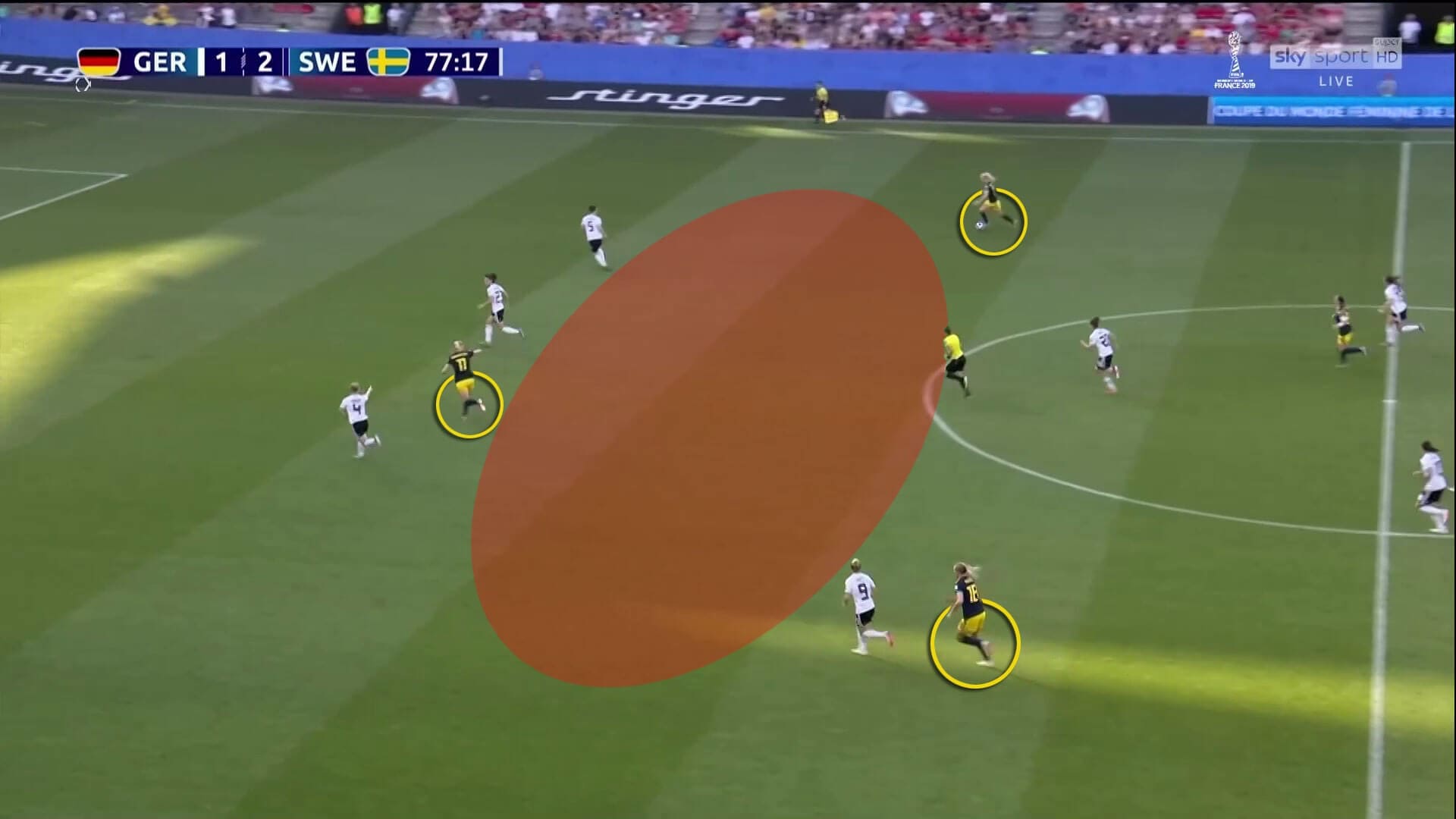
Germany’s final attempts
Voss-Tecklenburg waited until the 70th minute to line up captain Popp in a higher role. However, it seemed that Germany needed some time to change their attacking strategy. The midfielders often missed the opportunity to switch sides. Moreover, the wings were still left unoccupied at times. This disabled Germany to play around the Swedish block and therewith reduced the attacking options.
Finally, Germany were offered a huge opportunity after they created a numerical opportunity on the wing for the first time. However, the German side failed to score and were therewith eliminated in the quarter final by Sweden.
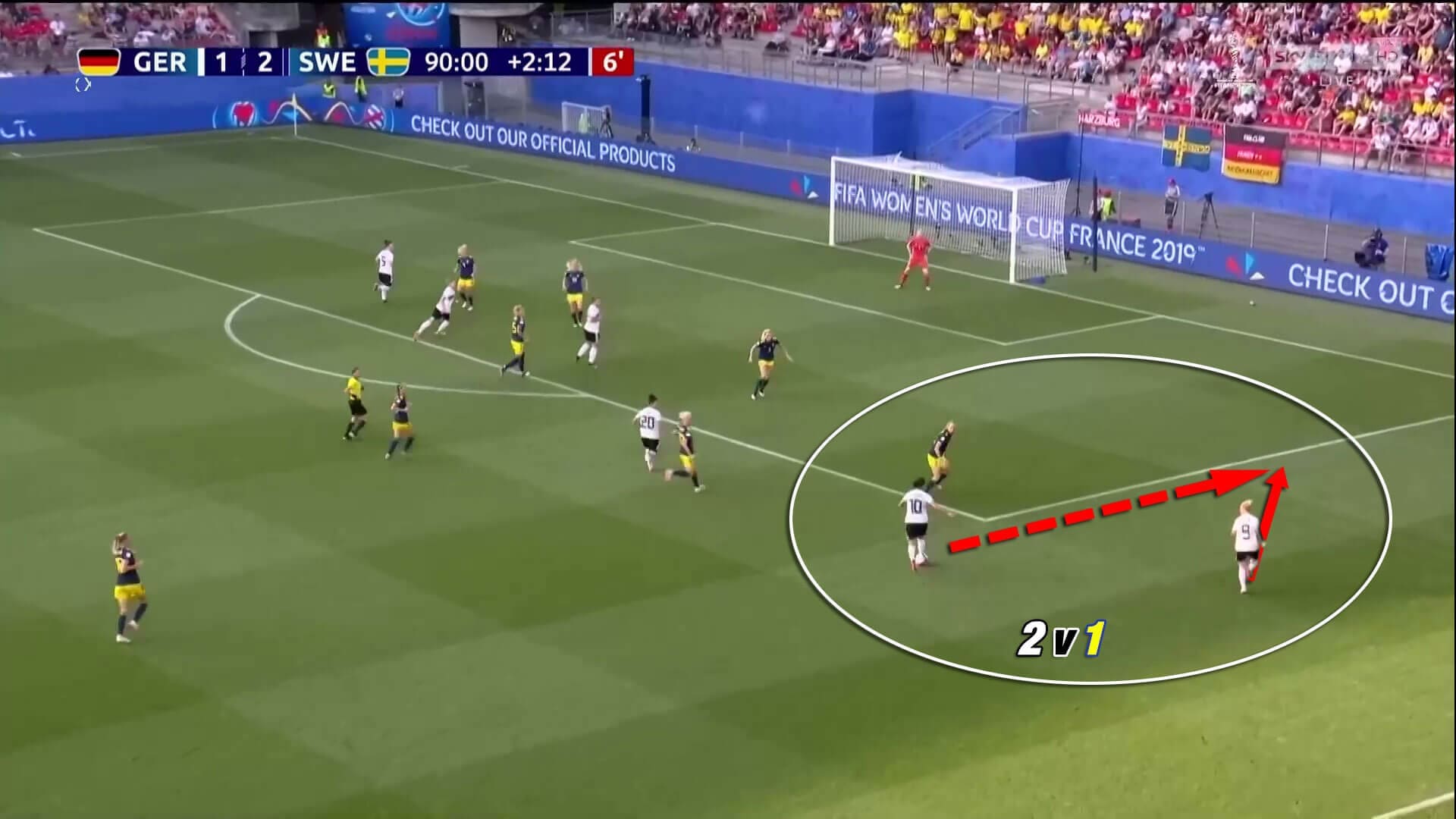
Conclusion
All in all, Germany took way too long to find a sensible concept to create chances against Sweden’s compact defence.
Sweden utilised a disciplined defending approach which was proven to be successful as our tactical analysis showed.
It remains to be seen whether Sweden’s defensive strategy also works out against more versatile attacking sides though.
If you love tactical analysis, then you’ll love the digital magazines from totalfootballanalysis.com – a guaranteed 100+ pages of pure tactical analysis covering topics from the Premier League, Serie A, La Liga, Bundesliga and many, many more. Buy your copy of the June issue for just ₤4.99 here, or even better sign up for a ₤50 annual membership (12 monthly issues plus the annual review) right here.

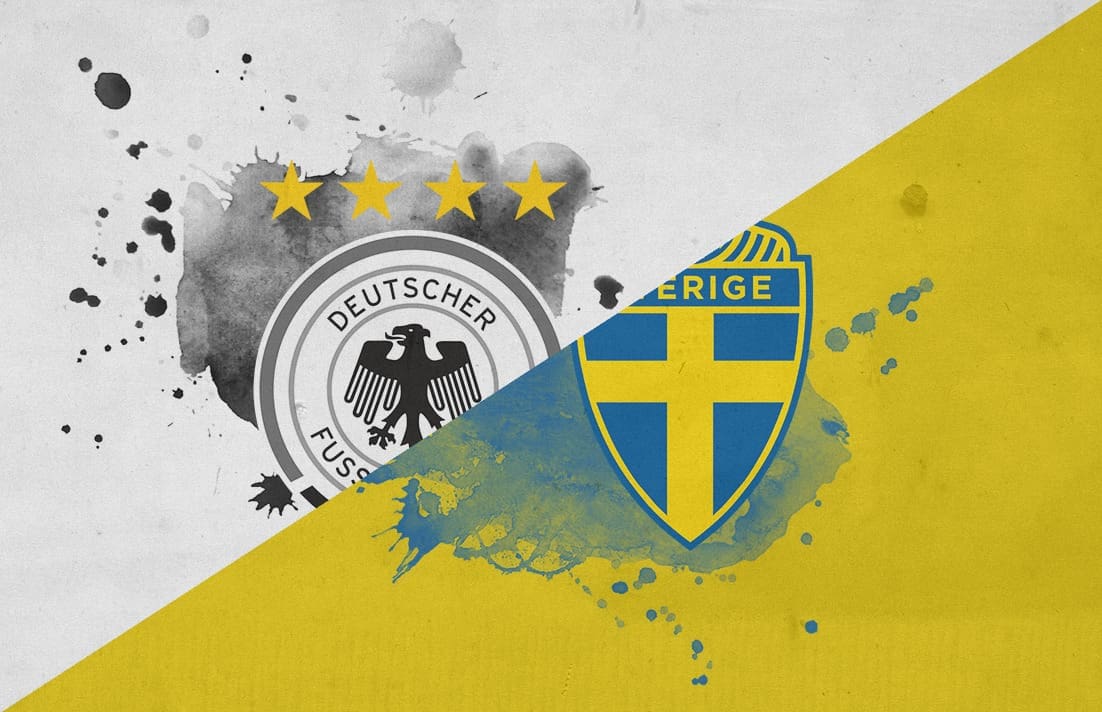



Comments